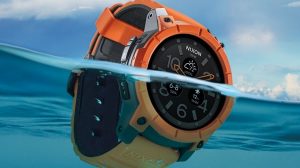 Being fit and healthy is a great way to spend free time – not just because it’s what the media is pushing on us, but it strengths you from the inside out and gives you a much better shot at a longer life compared to those who aren’t active and don’t do much moving around or pushing their bodies.
Being fit and healthy is a great way to spend free time – not just because it’s what the media is pushing on us, but it strengths you from the inside out and gives you a much better shot at a longer life compared to those who aren’t active and don’t do much moving around or pushing their bodies.
There’s also a reason fitness trackers have become such a big hit with things like Jawbone, FitBit and MyZone storming the markets at the moment. It’s not just because people want to see how much they’ve been running, or pushing themselves. For the ones who wear them, it’s because they need to monitor and keep track.
The Benefits
Monitoring your fitness has a range of benefits:
- Motivational
Seeing what you’ve managed to do can push you to do more, or do better, and have you continuously working to surpass yourself. This isn’t a bad thing, as long as you listen to your body’s limits and know when it’s had enough and that you’re not pushing it too hard, which can end up with you doing more damage than by just exercising and can even put a stop to your activities if you need to have time to heal.
- Improvement
A sure fire way to see that you’re strengthening up and that you’re getting fitter is when you can see that you’ve pushed yourself further than you’ve managed before. If you keep working out at the same intensity, you’re only ever going to get so fit, you’re never going to get past that stage. Being able to see that you’ve run further, faster, or lifted stronger and hiked your BPM means that you can track these changes.
Some people do very well if they’re faced with a challenge. Monitoring yourself, with friends, means that you can all work together to try and get past one another. This stops it from just being about getting fit but also makes it more about winning and gives you a whole new reason to push yourself.
Humans tend to be very results driven – we like to see that it’s making a difference, and see the tangible evidence before we’re happy. Even if we don’t see a change in our body, we can see it on the tracker that we’re doing something, we’re making a difference and we can see where we’re improving
The reason the market has done so well in a short number of years is because there was a space for it to create its own niche, because it’s something that people – while they can live without it – didn’t know they needed it until it was available to them and there. They’re only going to improve, too, and get better as the years go on with more and more features becoming available to the individual to make sure that they’re getting the most out of each and every one of their workouts and can see exactly where they’ve improved.



 In an earlier column, I encouraged you to try some fast 25s to boost your swimming speed. People have been trying the workouts and, lo and behold, they are swimming faster. Excellent!
In an earlier column, I encouraged you to try some fast 25s to boost your swimming speed. People have been trying the workouts and, lo and behold, they are swimming faster. Excellent! I completely agree that doing form drills to practice good swimming technique is critical to the process of becoming a faster swimmer. That written, you cannot expect that slow and purposeful drills will increase your sustained swimming speed if you never swim fast.
I completely agree that doing form drills to practice good swimming technique is critical to the process of becoming a faster swimmer. That written, you cannot expect that slow and purposeful drills will increase your sustained swimming speed if you never swim fast.